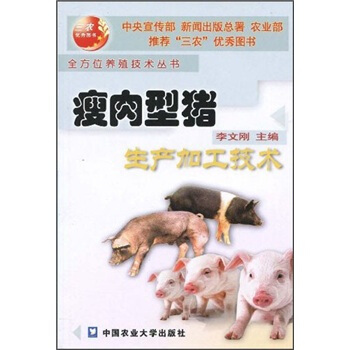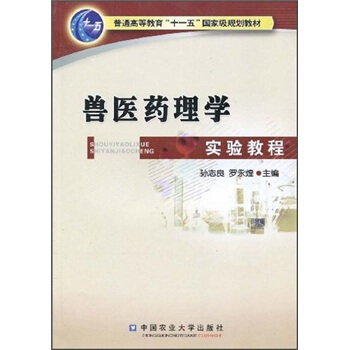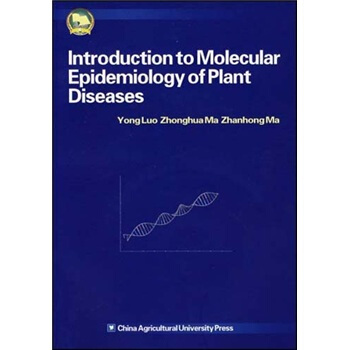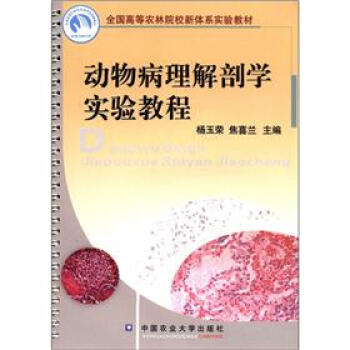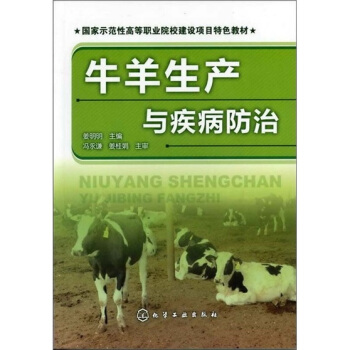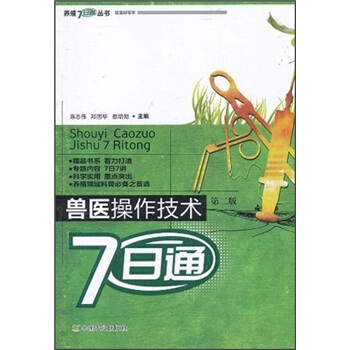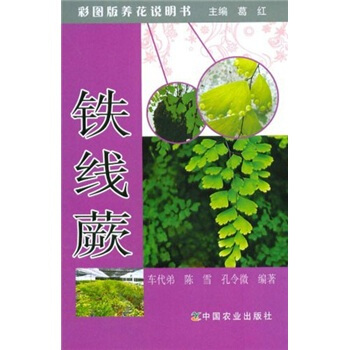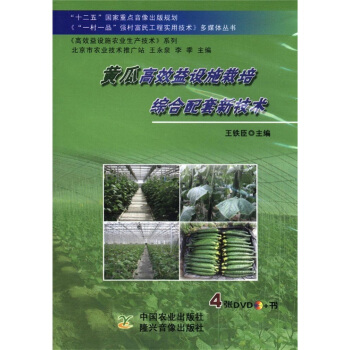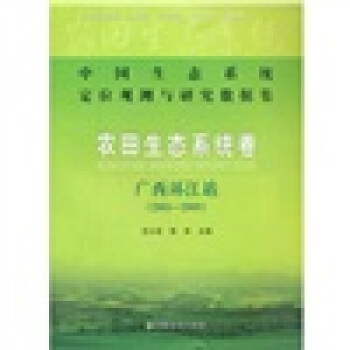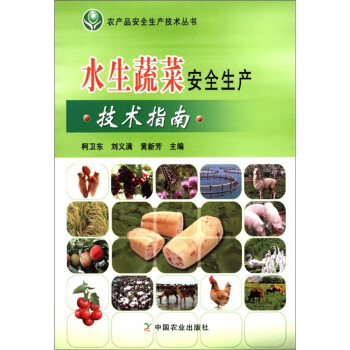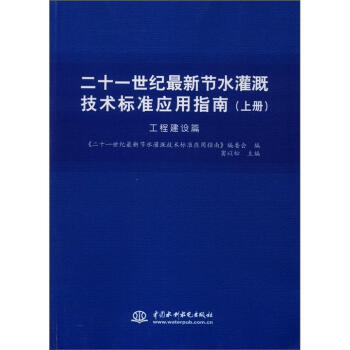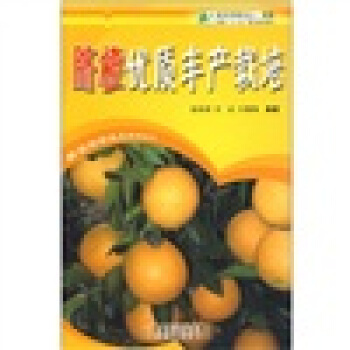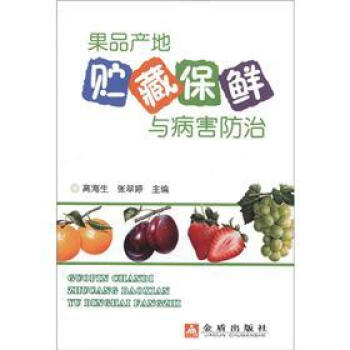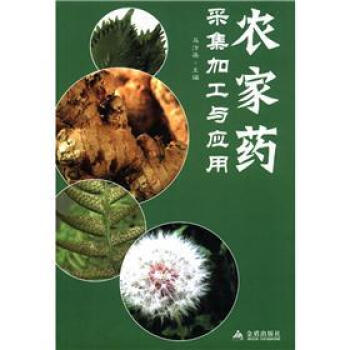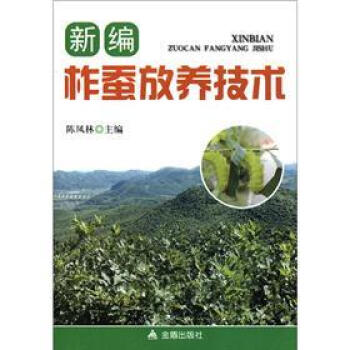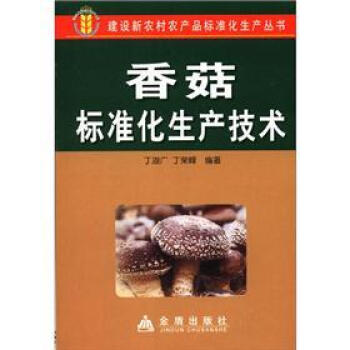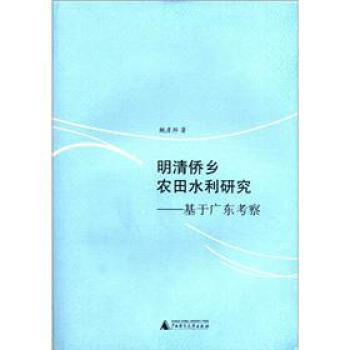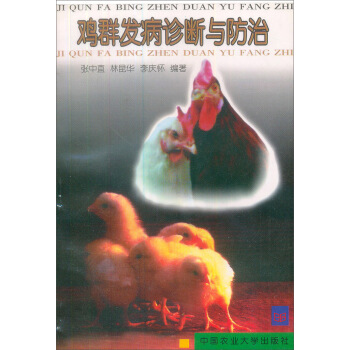具體描述
內容簡介
《瘦肉型豬生産加工技術》畜牧業是以植物性和動物性産品為原料,通過動物生産獲得人類必需動物産品的産業,其主體是養殖業。在發達國傢,畜牧産值占農業總産值的比例多在60%以上,個彆人多地少的國傢甚至超過80%。畜牧産品作為國民經濟支柱産業的食品加工業的原料供應已占到80%,人均年消費的食物中,肉、蛋、奶分彆達到100 kg、15 kg和300 kg,占總量的80%。這說明,現代畜牧業已成為農業乃至國民經濟的重要組成部分,其發展水平也成為一個國傢或地區發展水平的重要標誌。
內頁插圖
目錄
第一章 豬場建築
第一節 場址選擇
第二節 建築布局
第三節 豬捨建築
第二章 豬的品種及繁育體係
第一節 豬的品種
第二節 雜交利用
第三節 種豬繁育體係
第四節 種豬的選擇
第五節 種豬的引進
第三章 豬的飼養管理
第一節 豬的生物學特性及管理
第二節 豬場豬群結構
第三節 種公豬飼養管理及利用
第四節 後備母豬的飼養管理
第五節 空懷母豬的飼養管理
第六節 懷孕母豬的飼養管理
第七節 分娩母豬的飼養管理
第八節 哺乳母豬的飼養管理
第九節 仔豬的飼養管理
第十節 生産育肥豬的飼養管理
第四章 豬的人工授精
第一節 概述
第二節 公豬繁殖生理
第三節 精液的收集和處理
第四節 母豬的繁殖生理及發情鑒定
第五節 母豬的發情鑒定
第六節 輸精
第七節 豬的人工授精操作規程
第五章 豬病防治基本知識
第一節 豬病綜閤防製
第二節 豬病診斷技術
第三節 豬預防用生物製品
第四節 豬病防治常用藥物
第六章 豬傳染病
第七章 豬寄生蟲病
第一節 豬寄生蟲病的基本知識
第二節 原蟲病
第三節 蠕蟲病
第四節 豬外寄生蟲病
第八章 豬的普通病
第一節 豬的中毒性疾病
第二節 豬的營養代謝病
第三節 豬的內科病
第四節 豬的産科病
第五節 豬的外科疾病
第九章 豬屠宰加工與衛生檢驗
第一節 豬的宰前管理與檢驗
第二節 屠宰加工車間的衛生管理
第三節 生産人員的衛生
第四節 宰後檢驗的組織與要求
第五節 屠豬宰後檢驗的處理
第六節 肉新鮮度的檢驗
第十章 屠宰工藝
第十一章 醃臘肉製品
第十二章 熏烤製品
第十三章 醬鹵製品
第十四章 灌製類製品
第十五章 乾製品加工
參考文獻
精彩書摘
産房的仔豬保溫箱應安裝紅外綫燈、石英加熱管或保溫地闆。也可以考慮采用溫室原理,增加豬捨的采暖保溫能力。如從豬捨的南麵牆嚮南建跨度適當的保溫塑料大棚,在汙道的南側種植溫棚蔬菜。這樣既增加豬捨內的溫度,又改善瞭豬捨小環境,也有利於土地的充分利用,增加收入
(五)降溫、通風設施豬捨的通風設施有自然對流通風、縱嚮負壓通風、縱嚮正壓通風等。後兩種通風為機械通風。降溫設施更多地采用噴淋降溫,也有采用濕簾和負壓通風設備降溫的。除産房和保育捨外,豬捨一般都適閤噴淋降溫
(六)排汙設施豬捨建築中應考慮到豬的糞尿分離問題,整個豬場、整個豬捨地麵、每個豬圈地麵、定位欄地麵都要有一定的傾斜度,以免豬捨地麵上到處都有糞汙。豬捨內地麵均應嚮汙道側傾斜,整個豬捨應嚮豬場的汙道方嚮傾斜
(七)喂料器
喂料器應根據不同月齡、不同類型豬群、不同的圈捨、不同的喂料方式而有所不同。哺乳仔豬、斷奶仔豬一般采食的是顆粒飼料,可以用水泥料槽,但最好用自動料槽;生長豬、育肥豬的喂料方式有地麵喂料、料槽喂料、自動喂料器、單格喂料器等。空懷母豬、懷孕母豬主要采用水泥料槽喂料,哺乳母豬則多用鑄鐵料槽喂料
(八)飲水器
傳統養豬法是料槽和水槽共用,因此工作量很 大,豬的飲水受到時間限製,對豬的健康不利。目前豬場最常用的飲水器是鴨嘴式飲水器,少數豬場采用碗式飲水器。
……
前言/序言
畜牧業是以植物性和動物性産品為原料,通過動物生産獲得人類必需動物産品的産業,其主體是養殖業。在發達國傢,畜牧産值占農業總産值的比例多在60%以上,個彆人多地少的國傢甚至超過80%。畜牧産品作為國民經濟支柱産業的食品加工業的原料供應已占到80%,人均年消費的食物中,肉、蛋、奶分彆達到100 kg、15 kg和300 kg,占總量的80%。這說明,現代畜牧業已成為農業乃至國民經濟的重要組成部分,其發展水平也成為一個國傢或地區發展水平的重要標誌。
我國畜牧業的發展大緻經過傢庭副業、專業飼養和規模化飼養三個階段,目前正在更廣泛的區域嚮現代集約型方嚮轉變,特彆是改革開放以來的20多年,我國畜牧業得到迅速發展。主要錶現在:①畜牧生産總量穩定增長,如2002年肉、蛋、奶總産量比1978年提高6~11倍,人均占有量和年均消費量也都有大幅度提高;②畜牧業科技含量明顯提高,如主要畜禽的良種覆蓋率、飼料轉化率和發病死亡率等生産指標得到有益的改變,科技進步對畜牧經濟增長的貢獻率超過45 9,6;⑨畜牧業在農業生産體係中的主導地位已基本確定,如畜牧業産值占農業總産值的比例由1949年的12.4%、1978年的15.0%上升到2000年的30%以上;④畜牧産業化格局初具雛形,如社會化服務體係日趨完善、規模化經營不斷提高和多渠道開拓市場初見成效等。
《田園牧歌:消失的山野風物與鄉村記憶》 簡介 本書並非一本關於養殖業的技術指南,也與豬的生産加工過程無直接關聯。它是一麯獻給那些正在悄然消逝的山野風物、鄉村記憶和古老生活的挽歌。作者以一顆飽含深情的心,穿梭於中國廣袤而逐漸被遺忘的鄉村角落,用細膩的筆觸和樸實的語言,記錄下那些即將被現代文明洪流衝刷殆盡的珍貴瞬間。 第一章:山林的低語——遺落的野趣與草木情深 在工業化和城市化的浪潮席捲之下,許多人已經遺忘瞭山林的饋贈,遺忘瞭那些曾經滋養著一代代人的山野之味。本章將帶領讀者一同走進那些隱匿在群山之中、溪流之畔的原始世界。我們將一同探尋那些如今已難得一見的野生植物,瞭解它們曾經在鄉村生活中扮演的角色。 forgotten herbs and their medicinal secrets: We will delve into the forgotten lore of wild herbs, not for their modern medicinal applications, but for their ancient uses as remedies, dyes, and even as part of daily sustenance. Think of wild ginger used to ward off colds, stinging nettles transformed into nourishing broths, or the vibrant hues extracted from berries and barks for textile coloring. The focus here is on the knowledge passed down through generations, the intuitive understanding of nature's pharmacy. edible treasures of the wild: Beyond medicinal plants, the chapter will celebrate the bounty of edible wild species. We'll recount tales of foraging for wild mushrooms after the autumn rains, the joyous discovery of tart wild berries bursting with flavor, or the subtle sweetness of wild roots unearthed from the earth. These are not the cultivated fruits of orchards, but the untamed offerings of the forest floor, a testament to nature's generous, albeit dwindling, provisions. the forgotten language of the forest: This section explores the deeper connection between rural communities and their forest environment. It's about understanding the whispers of the wind through the leaves, the songs of unseen birds, the subtle signs that predict weather changes, and the respectful coexistence that once defined human interaction with the wild. It's about a primal understanding of cycles, seasons, and the delicate balance of ecosystems, a language that modern society is increasingly deaf to. 第二章:鄉土的脈搏——古老農耕的智慧與節奏 農耕文明是中國鄉村的靈魂,而古老的農耕方式,承載著一代代人的汗水、智慧與樸素生活哲學。本章將聚焦於那些正在消逝的傳統耕作技藝和與土地共生的生活節奏。 the rhythm of the seasons: We will paint a vivid picture of the agrarian calendar, not as a series of dates, but as a living, breathing cycle dictated by the sun, moon, and earth. From the arduous task of spring plowing, guided by the strength of oxen and the foresight of the farmer, to the golden harvest of autumn, the quiet slumber of winter – each season brought its own set of rituals, challenges, and celebrations. This is about a life lived in harmony with nature's tempo, a stark contrast to the clock-driven pace of urban existence. forgotten tools and techniques: The chapter will introduce readers to the ingenious tools and methods developed over centuries of agricultural practice. Think of the hand-carved wooden plows that turned the soil with painstaking effort, the intricate weaving of straw into baskets and mats, or the traditional methods of seed saving and crop rotation that ensured fertility and resilience. These are not simply relics of the past, but testaments to human ingenuity and resourcefulness in the face of environmental constraints. the philosophy of sustenance: Beyond the practicalities of farming, this section explores the underlying philosophy of sustenance that permeated rural life. It's about a deep respect for the land that provides food, a sense of community forged through shared labor and mutual aid, and a notion of sufficiency that valued quality of life over material accumulation. It's about a profound connection to the source of one's nourishment, a gratitude that is increasingly rare. 第三章:塵封的記憶——鄉村生活的光影與人情冷暖 鄉村,不僅僅是土地和房屋,更是由無數個鮮活的生命、溫暖的人情和代代相傳的故事 woven into an intricate tapestry. 本章將搜集那些散落在鄉村角落的記憶碎片,重現那些溫暖而又真實的生活場景。 the hearth and home: This part will explore the heart of rural dwellings – the hearth. We'll describe the communal gatherings around the fire, the storytelling that filled the evenings, the simple meals prepared and shared with love. It's about the sensory details of a rural home: the scent of woodsmoke, the warmth of the embers, the comforting weight of a handmade quilt. These are the foundations of family and community. the village marketplace and communal gatherings: The village marketplace was more than just a place for trade; it was a vibrant hub of social interaction, a place where news was exchanged, friendships were forged, and the pulse of the community was felt. We'll recount the lively atmosphere of market days, the boisterous calls of vendors, and the quiet conversations that transpired. Similarly, communal events like festivals, weddings, and funerals will be depicted, highlighting the shared joys and sorrows that bound people together. elders' wisdom and childhood tales: The elderly were the keepers of tradition, the living libraries of the village. This section will capture the wisdom passed down from elders – their practical advice, their moral guidance, and their nostalgic recollections of a bygone era. We will also revisit the unbridled joy of childhood in the countryside – the games played in the fields, the adventures in the woods, the simple pleasures that shaped young lives. These are the narratives that give a village its unique character and soul. 第四章:時代的潮汐——現代衝擊下的鄉村變遷 然而,如同奔騰不息的河流,現代文明的浪潮也無可避免地衝擊著鄉村的寜靜。本章將以一種客觀而略帶傷感的心情,記錄下這場變革留下的痕跡。 the allure and exodus of youth: The bright lights of the city, the promise of economic opportunity, and the allure of a more modern lifestyle have drawn many young people away from their ancestral villages. This section will explore the reasons behind this migration, the bittersweet farewells, and the lingering emptiness left behind in communities where aging populations are becoming the norm. the erosion of traditional practices: As generations with intimate knowledge of traditional ways pass on, so too do many of their skills and practices. This part will observe the gradual fading of ancient crafts, the adoption of modern farming techniques that may be more efficient but lack the soul of the old ways, and the homogenization of rural landscapes under the influence of standardized architecture and infrastructure. the bittersweet preservation of memory: In the face of these profound changes, a counter-movement of remembrance and preservation is also emerging. This section will touch upon the efforts of individuals and communities to document and safeguard their heritage – through local museums, oral history projects, or the simple act of sharing stories with younger generations. It’s a quiet struggle against the tide of forgetting, a testament to the enduring value of roots and identity. 結語:一麯未竟的歌 《田園牧歌:消失的山野風物與鄉村記憶》並非一本終結性的著作,而是一首仍在吟唱的歌。它試圖在最快速的時代留住最慢的時光,在最喧囂的城市喚醒最純粹的迴憶。它邀請每一位讀者,無論你是否來自鄉村,都去感受那份淳樸的溫情,去體味那份與土地相連的深刻,去珍藏那些即將逝去的,屬於我們共同的,寶貴的鄉村記憶。這本書,是為瞭提醒我們,在那片日漸稀疏的土地上,依然有不曾被遺忘的芬芳,有值得我們傾聽和守護的,關於生活最本真的聲音。
